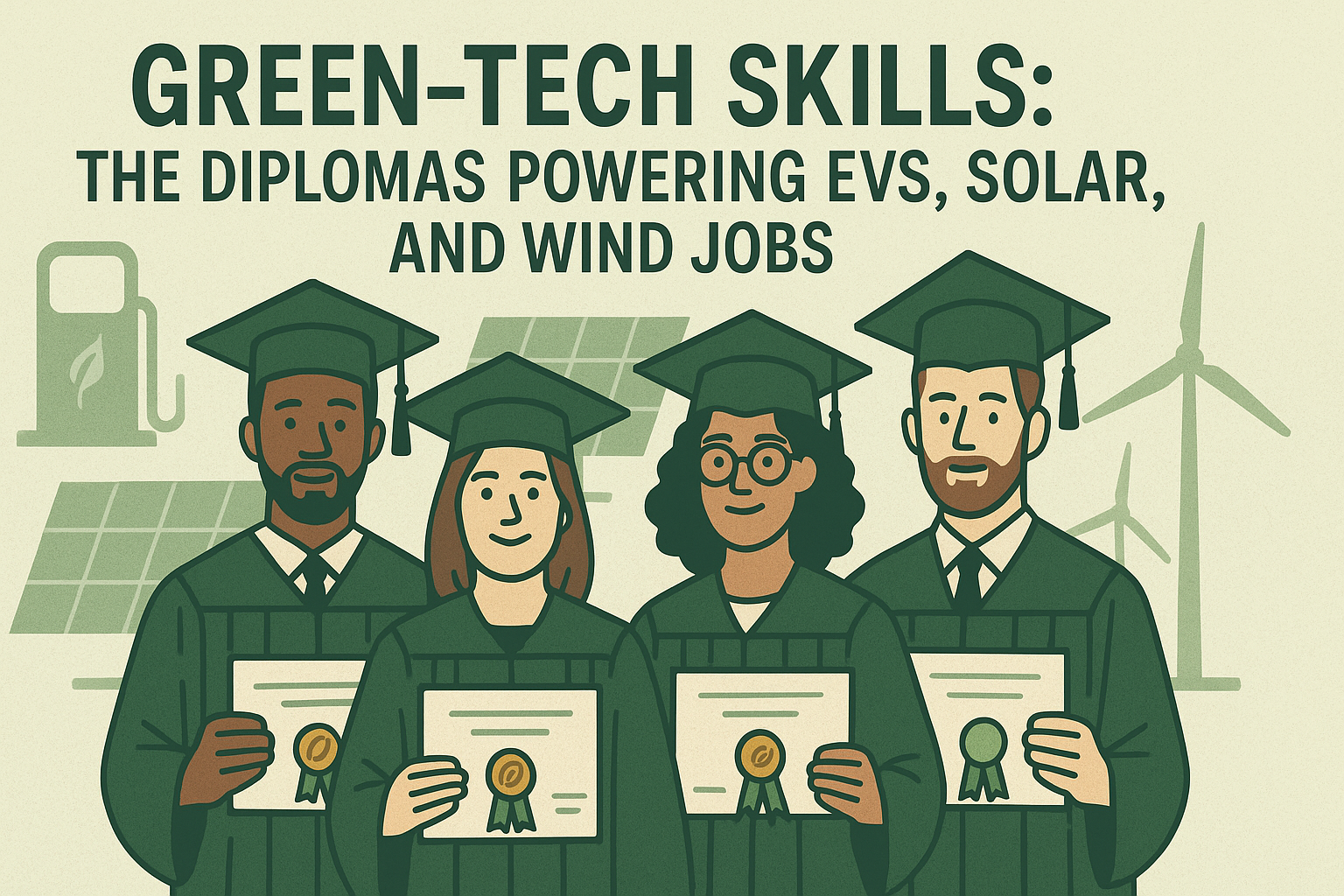The Polytechnic Ecosystem: India’s Engine for Technical Skills
Behind India’s booming economy is a workforce powered by a special kind of institution: the polytechnic college. These schools are the bedrock of the nation’s Vocational Education and Training (VET) system, serving a unique purpose that sets them apart from traditional universities. To understand the crucial choice between a government and a private polytechnic, you first need to see the bigger picture—the ecosystem they share, the bodies that regulate them, and the vital role they play for students, industry, and the country itself.
The Polytechnic’s Unique Role: A Bridge to Opportunity 🌉
Polytechnic institutions are designed to be incredibly versatile. Experts describe their role as a “multidimensional bridging function,” meaning they connect students to various opportunities in the educational and economic landscape. Their core mission is to create a skilled, mid-level technical workforce that fills the critical gap between university-educated engineers and on-the-ground craftspeople.
The curriculum is a powerful blend of theoretical knowledge and intensive, hands-on practical skills—the hallmark of the polytechnic system. This dual focus produces graduates who are not just conceptually sound but also immediately productive in a real-world industrial setting.
This approach opens up four key pathways for graduates:
- A Direct Pipeline to Industry: Diploma holders are highly sought after for supervisory roles like Junior Engineer, Site Supervisor, or Technician. Companies, especially in core engineering and manufacturing, often prefer these graduates for their practical skills, which can even surpass those of B.Tech graduates who might need extensive on-the-job training.
- A Strategic Route to Higher Education: For many, a diploma is a tactical stepping stone. It serves as a gateway to a Bachelor of Technology (B.Tech) or Bachelor of Engineering (B.E.) degree, often through “lateral entry” schemes that allow diploma holders to join a degree program in its second year. This provides a practice-oriented foundation before diving into the theoretical depths of engineering.
- A Launchpad for Entrepreneurship: The emphasis on practical skills equips graduates with the technical know-how to become self-employed. Many go on to launch their own repair shops, contracting services, or small-scale manufacturing units, fueling the grassroots economy.
- An Engine for Social Mobility: By offering affordable and accessible technical education, polytechnics provide a tangible pathway for students from socially and economically disadvantaged backgrounds to enter the technical workforce and achieve a better quality of life.
However, this flexibility presents a unique challenge. A curriculum designed for immediate job placement looks different from one meant to prepare students for a rigorous B.Tech program. This creates a delicate balance where the diploma’s greatest strength—its versatility—can also feel like a lack of singular focus, a crucial factor for students charting their long-term careers.
The Rulebook: Who Governs Technical Education?
The quality and standards of all technical institutions in India, including both government and private polytechnics, are shaped by a robust regulatory framework. Two main bodies, the All India Council for Technical Education (AICTE) and the National Board of Accreditation (NBA), set the rules of the game.
All India Council for Technical Education (AICTE)
Established in 1945, AICTE is the apex regulatory body for technical education, operating under the Ministry of Education. Its primary job is to ensure the planned and coordinated development of the technical education system nationwide.
AICTE’s key functions include:
- Approval: Granting permission for new institutions and courses after a rigorous evaluation.
- Standards: Setting and enforcing norms for curriculum, faculty qualifications, and infrastructure.
- Quality Assurance: Monitoring institutions to maintain quality benchmarks. AICTE approval is a critical mark of credibility.
- Funding: Making approved institutions eligible for government grants and scholarships.
National Board of Accreditation (NBA)
Operating under AICTE, the NBA has a more specific job: it accredits individual technical programs (like a Diploma in Civil Engineering) rather than entire colleges. This provides a precise measure of a specific course’s quality.
The NBA uses an Outcome-Based Education (OBE) model, which shifts the focus from inputs (like faculty numbers) to outcomes—what a student demonstrably knows and can do upon graduation. Securing NBA accreditation for a program is a powerful signal of high-quality education, enhancing graduate employability and providing international recognition.
This regulatory environment is evolving. AICTE is shifting from being a rigid enforcer to a facilitator of excellence, granting more autonomy to well-performing polytechnics. This means the quality of education isn’t static; it’s continuously improving from the ground up.
Getting In: A Tale of Two Admission Systems
The admission process is the gateway to a college, shaping its student body and campus culture. In India, the paths into government and private polytechnics are distinctly different.
Government Colleges: The Meritocratic Gauntlet
Admission to government polytechnics is a highly structured, competitive process driven almost exclusively by merit. The main selection tool is a state-level Common Entrance Test (CET) or a Polytechnic Common Entrance Test (POLYCET), which tests aptitude in subjects like Math and Science. The process is centralized and transparent: students take the exam, get a rank, and are allotted seats through a state-wide counseling process based on their rank and choices.
Private Colleges: A Dual-Track System
Private polytechnics offer a more flexible, dual-track admission model. They also admit students through state-level CETs, but they have an alternative pathway: direct admission or the management quota. A percentage of seats are reserved for this category, allowing college management to admit students based on their own criteria, which are often more lenient and may not require an entrance exam score. This offers greater accessibility but also creates a more academically diverse student body, requiring faculty to adapt their teaching styles.
The Impact of Reservation Policies
A defining feature of government institutions is their adherence to India’s constitutionally mandated reservation policies. These policies reserve a percentage of seats for students from historically disadvantaged communities (SC, ST, OBC) as well as for groups like women, persons with disabilities, and wards of military personnel. This actively engineers a socially and economically diverse student population, creating a unique learning environment where students from vastly different backgrounds interact and learn from one anotheran invaluable experience often less pronounced in more homogenous private institutions.
The Bottom Line: Cost, Affordability, and Return on Investment 💰
The financial difference between government and private polytechnics is often the single most important factor for students and their families.
Government Colleges: The Subsidized Path
Government polytechnics are funded by the state, so education is heavily subsidized. Tuition fees are exceptionally low, making technical education accessible to all. The total cost for a three-year diploma can be less than a single semester at a private college, often ranging from just ₹10,000 to ₹30,000 per year.
Private Colleges: The Investment-Driven Model
Private polytechnics are self-financed and operate like businesses. Their fees are significantly higher, ranging from ₹70,000 to over ₹3,00,000 per year. These fees fund modern facilities and generate profit, positioning education as a premium service.
Calculating the Return on Investment (ROI)
- Government College ROI: The ROI is exceptional. With a total cost often under ₹50,000 and a typical starting salary of ₹2 LPA to ₹4.5 LPA (Lakhs Per Annum), graduates can recoup their entire investment within months of employment. It’s a low-risk, high-reward proposition.
- Private College ROI: The ROI is more complex and riskier. A graduate needs a much higher starting salary to justify the large initial investment. While top-tier private colleges can deliver this, the time taken to break even can be several years for graduates from mid-tier institutions, making the financial viability a serious consideration.
Comparative Annual Fee Structure
| Feature | Government College (Typical Annual Range) | Private College (Typical Annual Range) |
| Tuition Fee | ₹8,000 – ₹22,000 | ₹40,000 – ₹2,50,000 |
| Admission Fee | ₹500 – ₹2,500 (one-time) | ₹10,000 – ₹20,000 (one-time) |
| Exam Fee | ₹500 – ₹1,500 | ₹1,000 – ₹5,000 |
| Other Charges | ₹1,000 – ₹3,000 | ₹5,000 – ₹15,000 |
| Estimated Annual Total | ₹10,000 – ₹30,000 | ₹70,000 – ₹3,00,000+ |
Note: Fees are indicative and can vary significantly.
The Academic Core: Faculty, Curriculum, and Teaching Style
The heart of any college is its academic delivery. Here, government and private polytechnics show a classic trade-off between stability and agility.
Faculty Profile: Stability vs. Agility
- Government Colleges: Faculty are public servants recruited through competitive exams, ensuring a high baseline of qualification and experience. They enjoy job security, which fosters a stable and dedicated teaching corps.
- Private Colleges: Faculty profiles are more variable. Top-tier institutions attract excellent academics and industry professionals. However, many colleges struggle with faculty retention due to lower pay and a lack of job security, which can lead to high turnover and inconsistent teaching quality.
Curriculum Design: Standardization vs. Flexibility
- Government Colleges: While historically slow to adapt, many government colleges are now gaining academic autonomy and designing modern, industry-relevant curricula based on the Outcome-Based Education (OBE) framework.
- Private Colleges: A key advantage here is flexibility. Private institutions can quickly update their curriculum and introduce cutting-edge specializations in areas like Artificial Intelligence, Cybersecurity, and Robotics to meet market demands.
Despite these differences, both systems share a common philosophy: a profound emphasis on “learning by doing.” A significant portion of the curriculum is dedicated to hands-on labs, workshops, and mandatory industry internships.
The Learning Environment: A Tale of Two Campuses 🏫
The physical environment of a college plays a crucial role in the student experience, and this is where the contrast is most visible.
Government Colleges: Functional and Affordable
These institutions often have sprawling, older campuses. The infrastructure is functional but can be dated. Labs may have older machinery, classrooms are basic, and amenities may need upgrading. The trade-off is clear: you get an incredibly affordable education but often in a less modern environment.
Private Colleges: Modern and Premium
Modern infrastructure is a major selling point for private colleges. They invest heavily in state-of-the-art labs with industry-standard equipment, “smart classrooms” with Wi-Fi and AC, superior amenities, and comfortable hostels. This comfortable, modern environment comes at a significant cost.
This infrastructure gap directly impacts practical learning. A student learning on the latest equipment in a private college may gain a more contemporary skillset, potentially giving them an edge in the job market over a government college graduate who might need more on-the-job training to catch up with current technologies.
Infrastructure & Facilities Scorecard
| Facility | Government College (Typical Standard) | Private College (Typical Standard) |
| Laboratories | Functional but often with older equipment. | Modern, well-equipped, industry-standard. |
| Library | Large collection of physical books; digital access may be limited. | Extensive digital libraries and physical books. |
| Classrooms | Basic and functional. | “Smart classrooms” with AC, Wi-Fi, projectors. |
| Hostels | Basic and affordable, often old. | Modern, well-maintained, better amenities. |
| Wi-Fi & Tech | Often limited or inconsistent. | Generally high-speed and campus-wide. |
After the Diploma: Career Paths and Job Prospects 🚀
The ultimate measure of success is a graduate’s career trajectory. The choice of institution often sets a student on one of two distinct career tracks.
The Placement Landscape: PSUs vs. MNCs
- Government Colleges: Graduates are prime candidates for the public sector and core engineering industries. Recruiters include Public Sector Undertakings (PSUs) like BHEL and ONGC, government departments like Indian Railways, and major private firms like L&T and Tata Motors.
- Private Colleges: These institutions have stronger ties to the private corporate sector, especially IT and services. IT giants like TCS, Wipro, and Infosys, along with numerous startups and Multinational Corporations (MNCs), are frequent recruiters.
This makes the college choice a strategic career decision. Aspiring for a stable government job? A government polytechnic is a great path. Eyeing a fast-paced corporate career in IT? A private polytechnic with strong industry links might be a better fit.
Salary Benchmarks: Expectations vs. Reality
Across both systems, a typical starting salary for a fresh diploma holder ranges from ₹1.5 LPA to ₹4.5 LPA. Top institutions in both sectors report higher packages, but these are the general benchmarks.
A crucial word of caution: You may see salary sites reporting incredibly high average salaries for polytechnic alumni (e.g., ₹19 LPA). This is highly misleading for a new student. These figures represent the average earnings of alumni with many years of experience, who have often earned a B.Tech degree and advanced to senior roles. It shows the strong long-term potential of a diploma, not the starting salary.
The Final Verdict: Which Path Is Right for You?
The choice between a government and a private polytechnic isn’t about which is “better”—it’s about which is better for you. Each offers a distinct value proposition tailored to different priorities, finances, and career goals.
At-a-Glance Summary Matrix
| Parameter | Government Polytechnic Colleges | Private Polytechnic Colleges |
| Cost & ROI | ✅ Pro: Extremely low fees, high & rapid ROI. | ❌ Con: High fees, slower & riskier ROI. |
| Admission | ✅ Pro: Merit-based and transparent. | ✅ Pro: Flexible with direct admission options. |
| Faculty | ✅ Pro: Stable, experienced, and well-qualified. | ⚠️ Con: Quality can be highly variable; risk of instability. |
| Infrastructure | ⚠️ Con: Typically older, with basic facilities. | ✅ Pro: Modern, state-of-the-art infrastructure. |
| Curriculum | ✅ Pro: Moving towards rigorous, modern standards (OBE). | ✅ Pro: Agile and can offer new, market-driven courses. |
| Career Path | ✅ Pro: Strong pathway to government/PSU jobs. | ✅ Pro: Strong connections to the private/corporate sector. |
Actionable Recommendations for Students
- Profile 1: The Cost-Conscious, Merit-Driven Student
- Who you are: You have a strong academic record, limited finances, and want a stable job in a core engineering or government field.
- Recommendation: A government polytechnic is the clear choice. The negligible fees, quality teaching, and direct pipeline to secure jobs offer unbeatable value and ROI.
- Profile 2: The Student Seeking Modern Facilities & Niche Skills
- Who you are: You can afford higher fees, want to study an emerging field (like AI or EV Tech), and value a modern campus.
- Recommendation: A top-tier private polytechnic is a strong contender. Do your homework: look for NBA-accredited programs and a proven placement record in your chosen field to ensure the high cost is justified.
- Profile 3: The Student Aiming for a B.Tech Degree
- Who you are: Your main goal is to use the diploma for lateral entry into a good B.Tech program.
- Recommendation: This is nuanced. A diploma from a prestigious government polytechnic carries brand value that can help in B.Tech admissions. However, a private polytechnic that’s part of a larger university might offer a smoother, integrated transition into its own degree program.
- Profile 4: The Undecided Student
- Who you are: You’re interested in technology but unsure about your long-term career path.
- Recommendation: A government polytechnic is a safe, valuable, and low-risk starting point. The minimal financial investment keeps all future doors open—whether it’s a job, higher education, or starting your own business.
Ultimately, the most important distinction isn’t “government vs. private” but “high-quality vs. low-quality.” The wisest approach is to look beyond the ownership label and judge any institution—public or private—on the metrics that matter: NBA accreditation, faculty credentials, lab quality, and a transparent, verifiable placement record.




I liked the subject. Polytechnic education sometimes seems curtail to further education.